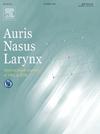Current state of causes, pathophysiology, and treatment methods of laryngeal and tracheal trauma in Japan
IF 1.5
4区 医学
Q2 OTORHINOLARYNGOLOGY
引用次数: 0
Abstract
Objective
Appropriately managing laryngeal and tracheal trauma is important. However, coherent reports on this appropriate management are limited and include inconsistent treatment methods. We sought to survey the causes, pathophysiology, and treatment methods of laryngeal and tracheal trauma in Japan. Furthermore, we aimed to propose a classification and treatment guidelines that enable consistent evaluation and treatment regardless of the evaluator or facility.
Methods
Based on a survey conducted at facilities certified by the Japan Broncho-Esophagological Society, we retrospectively evaluated 86 patients.
Results
There were 84 cases of laryngeal trauma, of which 2 cases were complicated by tracheal trauma. Tracheal trauma was reported in 2 cases. The median age was 35.5 years; 68 (81 %) were male patients. The most common mechanism was sports-related laryngeal trauma (39 %). Airway management was performed in 11 patients (13 %), including tracheostomy in 9 patients. Laryngeal fractures were observed in 29 (35 %) patients, with reduction being performed in 12 patients. Based on clinical symptoms, the severity was classified according to the classification proposed by Umeno et al. [1]: group 1, 24 cases (28 %); group 2, 8 cases (9 %); group 3, 19 cases (22 %); group 4, 2 cases (2 %); unclassified, 13 cases (14 %); and no abnormalities, 21 cases (24 %).
Conclusions
We proposed Severity Classification and Treatment Guidelines for laryngeal trauma that could only evaluate the presence or absence of four clinical findings. Using this classification, the severity of almost all cases could be classified; treatment plans could be determined accordingly. Furthermore, the addition of comprehensive judgment using phonatory ability tests and acoustic analysis would enable consistent evaluation and treatment that are unlikely to differ among evaluators and institutions, which is expected to help establishing treatment of blunt laryngeal trauma in the future.
日本喉、气管外伤的病因、病理生理及治疗方法的现状
目的对喉气管外伤进行适当的处理是重要的。然而,关于这种适当管理的连贯报道是有限的,并且包括不一致的治疗方法。我们试图调查日本喉和气管外伤的原因、病理生理和治疗方法。此外,我们的目标是提出一种分类和治疗指南,使评估人员或设施的评估和治疗保持一致。方法基于在日本支气管食管学会认证的机构进行的一项调查,我们回顾性评估了86例患者。结果84例喉外伤,其中合并气管外伤2例。气管外伤2例。中位年龄为35.5岁;男性68例(81%)。最常见的机制是运动相关的喉部损伤(39%)。11例(13%)患者行气道管理,其中9例患者行气管切开术。29例(35%)患者观察到喉骨折,12例患者进行了复位。根据临床症状,按照Umeno等人提出的分级方法进行严重程度分级。[1]:第1组24例(28%);2组8例(9%);第三组19例(22%);第4组2例(2%);未分类,13例(14%);无异常21例(24%)。结论:我们提出了喉外伤严重程度分级和治疗指南,该指南只能评估四种临床表现的存在与否。使用这种分类,几乎所有病例的严重程度都可以分类;据此确定治疗方案。此外,使用发音能力测试和声学分析的综合判断将使评估人员和机构之间的评估和治疗不太可能存在差异,从而实现一致的评估和治疗,这有望在未来帮助建立钝性喉外伤的治疗方法。
本文章由计算机程序翻译,如有差异,请以英文原文为准。
求助全文
约1分钟内获得全文
求助全文
来源期刊

Auris Nasus Larynx
医学-耳鼻喉科学
CiteScore
3.40
自引率
5.90%
发文量
169
审稿时长
30 days
期刊介绍:
The international journal Auris Nasus Larynx provides the opportunity for rapid, carefully reviewed publications concerning the fundamental and clinical aspects of otorhinolaryngology and related fields. This includes otology, neurotology, bronchoesophagology, laryngology, rhinology, allergology, head and neck medicine and oncologic surgery, maxillofacial and plastic surgery, audiology, speech science.
Original papers, short communications and original case reports can be submitted. Reviews on recent developments are invited regularly and Letters to the Editor commenting on papers or any aspect of Auris Nasus Larynx are welcomed.
Founded in 1973 and previously published by the Society for Promotion of International Otorhinolaryngology, the journal is now the official English-language journal of the Oto-Rhino-Laryngological Society of Japan, Inc. The aim of its new international Editorial Board is to make Auris Nasus Larynx an international forum for high quality research and clinical sciences.
 求助内容:
求助内容: 应助结果提醒方式:
应助结果提醒方式:


